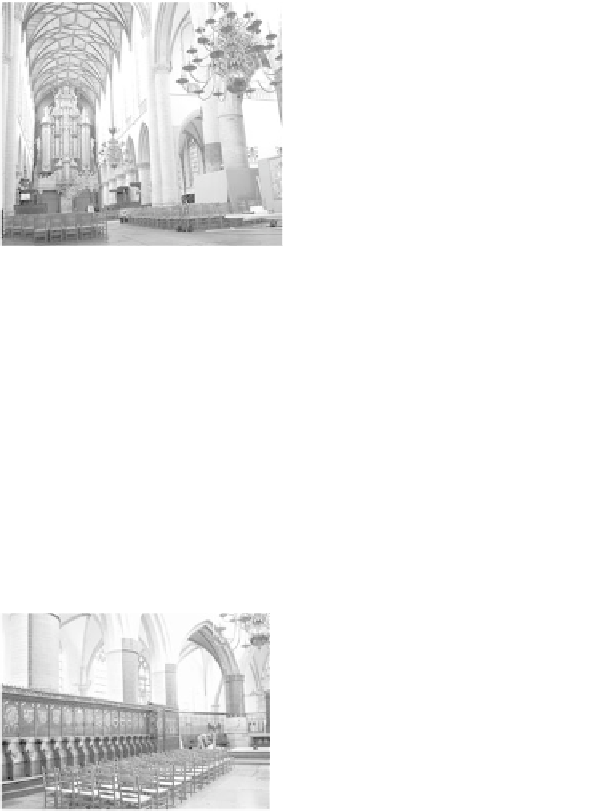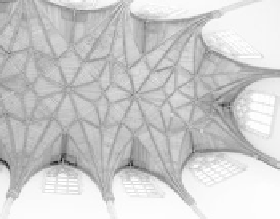Travel Reference
In-Depth Information
some columns near the center of
the church. But in 1566, Protestant
extremists stripped the church of its
graven images and ornate Catholic
trappings, leaving it relatively stark,
with minimal decoration. They
whitewashed everything. The fres-
coes you see today were restored
when the whitewash was removed
in the 1980s.
Look up to see the fan-vaulted
cedar ceiling from 1530. Look down to see tombstones paving
the f loor. And look midway
up the walls to catch squat-
ting characters supporting
the pilasters. The three-story
organ fills the west wall.
• We'll circle the church, but
first stand at the candle-lined,
fence-like brass barrier and look
into an enclosed area of wooden
benches (“stalls”) and the altar,
known as the...
Choir
After the church's foundation was laid, the choir was built first
and used for worship for more than a
century while the rest of the building
was completed.
Tod ay, t he br a s s-a nd-wood
barrier keeps tourists from enter-
ing the most sacred area, just as
peasants were kept out in medieval
times. While the commoners had to
stand during services, local big shots
got to perch their heinies on the little ledges (called misericords,
carved in 1512) of the
wooden
stalls
that line the choir; the
eighth stall along the left-hand
side shows a poor peasant bend-
ing over to bear a rich g uy 's
bum on his back. The stalls are
also decorated with the coats of
arms of noble families, whose
second sons traditionally became
priests.





















